A return to natural materials
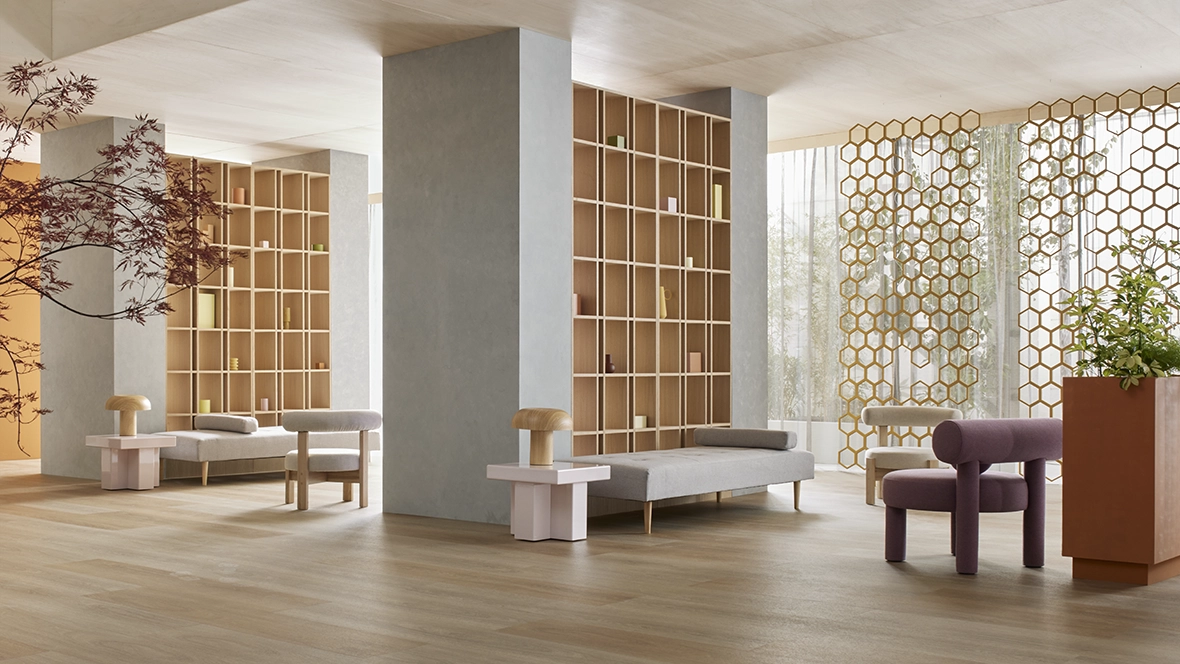
Natural materials are taking centre stage in today’s design landscape. From interiors to exteriors, there’s a growing demand for spaces that feel authentic, calming, and connected to nature. Discover how wood, stone, and other natural elements are shaping the future of interior design.
Across both interior and exterior design, natural materials are enjoying a strong revival—and it’s more than just a passing trend. It reflects a broader movement towards authenticity, sustainability, and sensory-rich environments. As we move away from artificial surfaces, there’s increasing interest in materials that bring warmth, texture, and a deeper connection to the natural world, particularly materials like wood and stone.
This evolution is explored in Forbo Flooring’s 2025/2026 Trend Report, Beyond the Surface, with chapters such as Beyond Material Wood and Beyond Material Stone offering insight into how these familiar materials are being reimagined in contemporary interiors.
But the renewed focus on natural materials goes beyond the materials themselves. It also encompasses organic forms, calming colour palettes, and tactile qualities that invite a more intuitive, nature-connected experience in interior spaces.
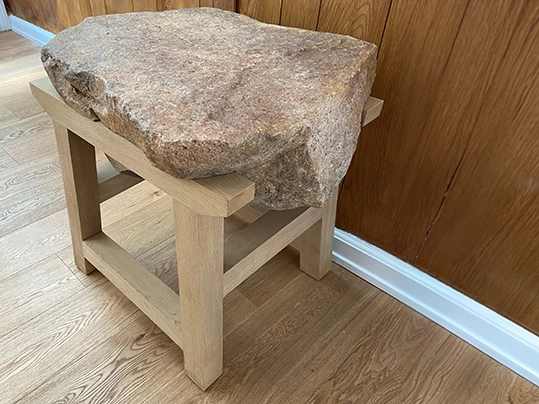
Natural materials have unique characteristics that can’t be manufactured. They age gracefully, gaining character over time and developing a rich patina that tells a story. More and more, designers are leaning into this individuality—favouring materials that express the beauty of the natural world, and celebrating variation, uniqueness, and diversity in appearance.
We are seeing designers revisit historic faux-bois (imitation wood grain) techniques in more sustainable ways, keeping the appeal of wood while embracing responsibility. These reinterpretations honour the spirit of natural wood while enabling new expressions in materials like vinyl—offering a flexible, low-maintenance way to capture wood’s warmth and character in diverse environments. The same goes for stone, which is now being used more fluidly, with designers moving away from rigid shapes and towards softer, more organic expressions.
Wood has always been a staple of architecture and design—but today’s use of wood is evolving in exciting ways. Textured, untreated, and even charred surfaces are becoming more common, bringing depth and warmth into spaces. At the same time, smoother, high-gloss, or lacquered finishes are making a comeback, often inspired by traditional Japanese techniques such as urushi (a natural lacquer derived from the sap of the Japanese lacquer tree).
This contrast—raw meets refined—adds character and versatility to spaces, especially when used to balance minimalism with warmth.
From a sustainability perspective, the focus is shifting towards responsible sourcing, circularity, and longevity. Thoughtful use of timber supports low-impact construction and aligns seamlessly with biophilic principles that aim to improve our connection with nature.
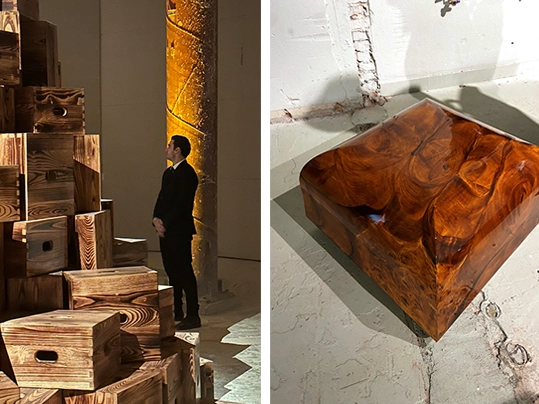
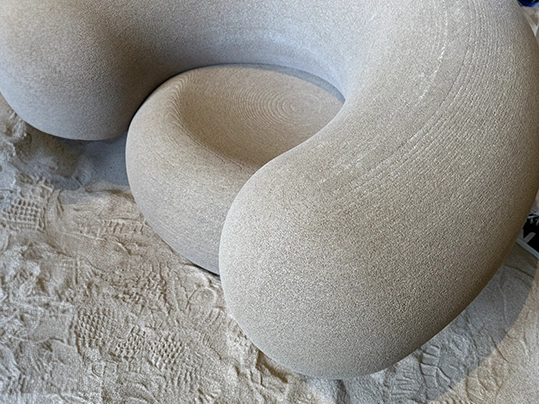
Long associated with strength and permanence, stone is now being used in more expressive and unexpected ways. Designers are exploring sculptural forms, curved edges, and pebble-like textures to soften its presence and emphasise its tactile beauty.
Our design research also points to a rise in the use of locally sourced or reclaimed stone, helping reduce environmental impact while keeping the material’s natural charm intact. These approaches maintain the integrity of stone while making it more accessible and more sustainable for modern interiors.
The renewed focus on natural materials is also influencing colour trends. At Forbo Flooring, our design team has defined a nature-inspired palette that enhances the visual and emotional impact of materials in interior spaces.
• Wood-inspired tones such as warm infinite oak and brown infinite oak reflect the richness of timber and add an inviting, grounded feel.
• Stone-inspired shades such as dawn pebble, travertine prism, and bottle green bring the essence of minerals and organic textures into interior spaces.
Soft clay and mustard tones round out the palette, offering a harmonious connection between wood, stone, and nature-driven design. These tones aren’t just aesthetically pleasing. They contribute to interior environments that feel calm, balanced, and healthier, supporting well-being in both residential and commercial settings.
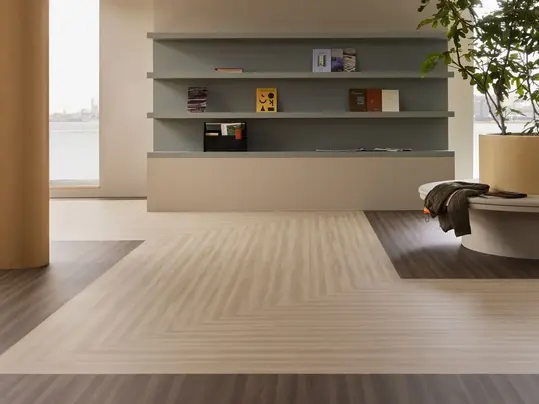
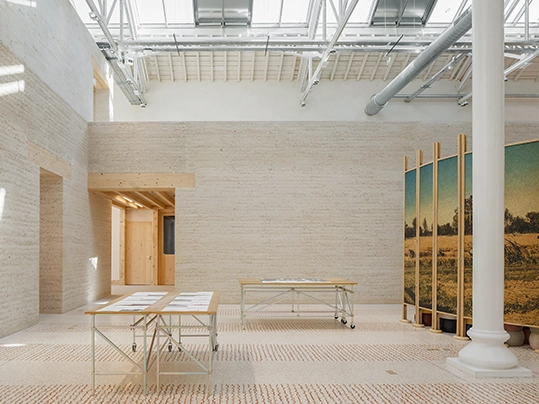
Beyond interiors, natural materials are shaping the wider built environment. The latest issue of our architectural design magazine ArchIdea highlights how bioregional design is gaining momentum, with architects opting for locally sourced resources to lower their projects’ environmental impact.
Materials like earth, hempcrete, and reclaimed timber are increasingly being chosen for their ability to work with nature, not against it. This design approach improves air quality, acoustics, and overall occupant well-being, while helping buildings connect more closely to their environment.
As the conversation around sustainability and wellness continues, the use of natural materials in interior design is only expected to grow.
Looking to the future, we expect to see:
• Innovation in sustainable materials: Advances in engineered wood, bio-based options, and recycled content will unlock new design possibilities.
• Increased adoption of biophilic design: Natural materials will play a bigger role in workplaces, healthcare, and educational spaces as designers prioritise well-being.
• A shift towards local sourcing: Reducing transport emissions by using materials available nearby will become a key part of responsible design.
By embracing wood, stone, and other nature-driven materials, not only in their raw forms but also through thoughtful innovation, we’re moving towards a future where the boundaries between indoors and outdoors, natural and built, begin to blur.
Want to explore these trends further?
Download our full 2025/2026 Trend Report, Beyond the Surface, or dive into the latest issue of Archidea to see how natural materials are inspiring the future of design.